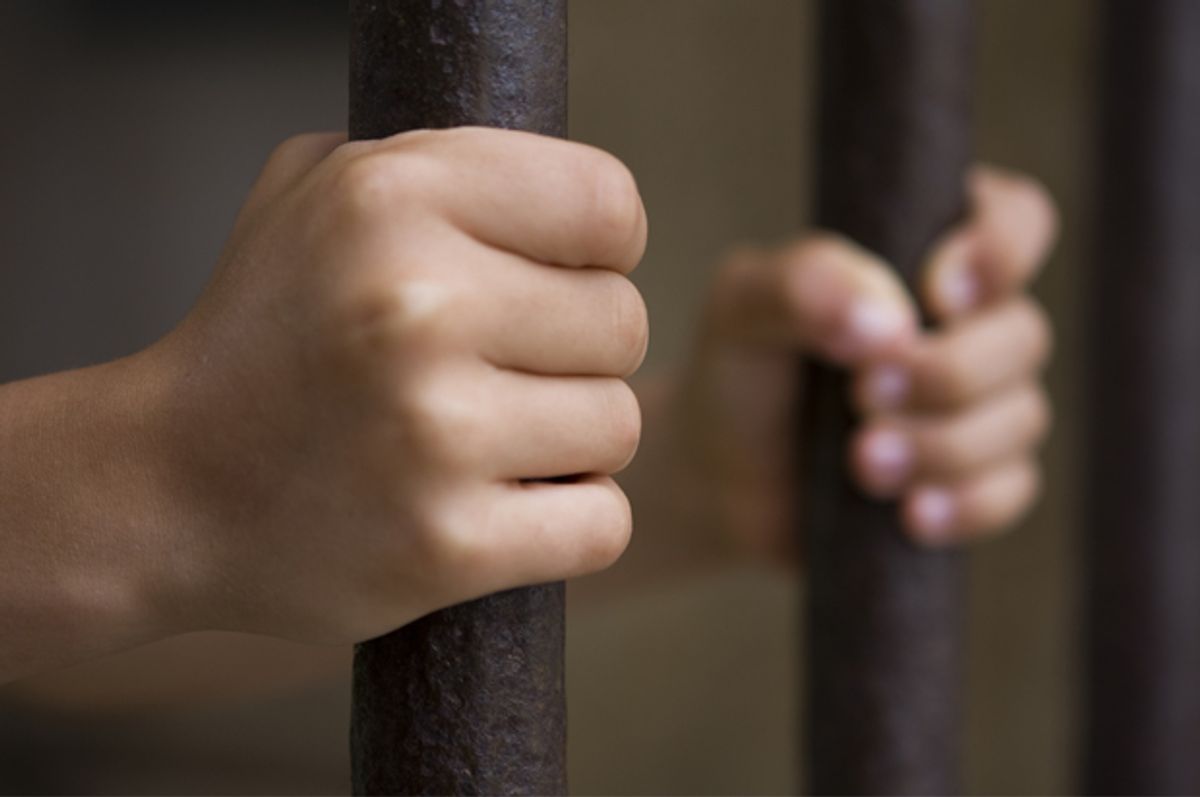A deeply reported new report by the Huffington Post's Dana Liebelson looks at youth held in adult prisons as part of the long form reporting unit, Highline, and the picture is as grim and sickening as you’d imagine.
Liebelson travels to Michigan, also the site of a stirring feature collaboration between The Atlantic and The Marshall Project earlier this year, entitled “A Boy Among Men: What happens when you throw a teenager into an adult prison? Guess,” and visits multiple adult facilities that house juvenile inmates. Through a series of interviews with youths currently held in adult prisons and jails and even an interview with a former correctional officer (finding an officer willing to talk proved difficult), Liebelson depicts a picture that taken with The New Yorker’s Jennifer Gonnerman profile on Kalief Browder and the New York Times’ series on juvenile detention at Rikers Island, should provoke loud cries of an epidemic of human rights abuses. After all, Justice Kennedy cited Browder’s horrifying plight through three years at Rikers Island for a petty theft charge to criticize the widespread use of solitary confinement in American prisons recently.
The interviews and particular details of the individual stories is surely worth a read but some striking points particularly stand out:
The U.S. is locking up more children with adults
Between 1985 and 1995, the number of youth incarcerated in prisons and jails roughly doubled with nearly 6,000 youth under the age of 18 held in adult facilities across the country as of 2013.
In nine states, 17-year-old youth are automatically charged as adults.
Black youth are much more likely to be jailed with adults than white children
A 2007 study found that in a single year, almost 10 times as many black kids were committed to adult facilities as white kids. Chicago prosecuted 257 children as adults between 2010 and 2012, only one was white.
A nationwide sample of cases sent from juvenile to adult court in 2013 shows that about half were related to property, drug or public order crimes, not serious violent offenses.
Housing juveniles with adult inmates is severely harmful
According to Liebelson, “one study, reviewed by the Centers for Disease Control and Prevention, tracked what happened to minors in custody for similar crimes. After they were released, those who had served in the adult system were 77 percent more likely to be arrested for a violent felony than those who were sent to juvenile institutions.”
And the conditions some youth are subjected to in adult prisons and jails are harmful while they remain incarcerated. Liebelson spoke with a young inmate who “had over a dozen adult cellmates before he turned 18,” two of whom had sexually assaulted him.
Although Congress passed the federal Prison Rape Elimination Act in 2003, it took until 2012 for the federal rules to be issued and change is slow to come. In 2015, only 10 states reported that they were in full compliance. Some states don’t even bother to distinguish between minors and adults when collecting statistics on sexual abuse. Liebelson even spoke with juvenile inmates who claimed to suffer threats of rape from correctional officers.
Change won’t come easy
According to The New York Times, Seventy-five officers were transferred from their positions at Rikers Island ager resisting recent reforms. Liebelson details accounts of retaliation aimed at youth who dared speak out against their housing and abuses. “Two inmates,” she writes, “allege that after they reported officer wrongdoing, they were targeted with numerous forms of retaliation, including ‘unprovoked beatings, gassings, forced cell extractions, food and water deprivation, extended deprivation of basic hygiene and health care, and fabricated misconduct tickets.’”
But there is reason to be hopeful. The New York Times ran this headline in February, “Even as Many Eyes Watch, Brutality at Rikers Island Persists,” and then this headline in June, “Deal Is Near on Far-Reaching Reforms at Rikers, Including a Federal Monitor.”
Let’s hope more stories like Liebelson’s and a persistent focus on the issue leads to real reforms.

Shares